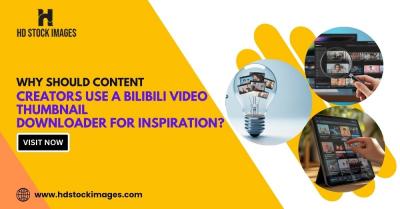When it comes to creating visually appealing college projects, having access to high-quality images is essential. iStock Images is a fantastic resource for students looking to enhance their presentations, assignments, or portfolios. With millions of images, illustrations, and videos available, it offers something for every need. Whether you're working on a marketing project, a research paper, or a creative portfolio, understanding how to navigate iStock can elevate your work and help you stand out.
Licensing and Copyright Considerations
Before diving into the vast sea of images on iStock, it's crucial to grasp the intricacies of licensing and copyright. Using images without proper licensing can lead to serious consequences, including legal troubles and academic penalties. Here’s a breakdown of what you need to know:
Types of Licenses:
- Standard License: This is the most common license for iStock images. It allows you to use the images for personal, educational, and commercial projects, with some restrictions. For instance, you can't use standard licensed images in merchandise or templates for resale.
- Extended License: If your project involves broader distribution or commercial use, consider purchasing an extended license. This grants you additional rights, such as using the image on products for sale.
Key Copyright Considerations:
- Attribution: Some images may require attribution, meaning you need to credit the photographer or creator. Always check the license details to ensure you're compliant.
- Modification Rights: Depending on the license, you may or may not have the right to alter images. If you plan to modify an image for your project, ensure your license permits it.
- Usage Restrictions: Pay attention to any restrictions on the use of images, especially for sensitive topics or identifiable individuals. Some images may not be suitable for certain contexts.
In summary, using iStock images can significantly enhance your college projects, but understanding the licensing and copyright considerations is vital. By respecting these guidelines, you’ll not only create stunning presentations but also uphold ethical standards in your academic work. So, take the time to familiarize yourself with iStock’s licensing options before you start downloading. Your future self—and your professors—will thank you!
Also Read This: Can You Submit the Same Photos to Shutterstock and iStock? Understanding Exclusivity
3. Types of iStock Images Available
When diving into the world of iStock images, you'll discover a treasure trove of visual content tailored to suit every creative need. iStock offers a diverse array of image types, ensuring that students can find exactly what they need for their projects. Let’s break down some of the most common types you might encounter:
- Stock Photos: These are high-quality photographs available for licensing. Whether you need vibrant nature shots, bustling cityscapes, or candid lifestyle images, stock photos cover a vast range of themes.
- Illustrations: If you're looking for something more artistic, iStock provides a variety of illustrations. From whimsical doodles to sophisticated vector art, illustrations can add a unique flair to presentations or reports.
- Vectors: Perfect for graphic design projects, vectors are scalable images that can be resized without losing quality. These are great for logos, infographics, and detailed diagrams.
- Videos: In addition to still images, iStock also offers a selection of stock videos. Short clips can enhance your presentations or serve as engaging content for multimedia projects.
- Audio Files: Don’t overlook audio! iStock contains a library of sound effects and music tracks that can complement your visuals, particularly in video projects.
Each type of image serves a different purpose, so think about what best fits your project. For instance, if you're working on a presentation about climate change, a combination of compelling stock photos and informative illustrations can create a powerful narrative. On the other hand, if you’re crafting a video project, incorporating stock footage can significantly elevate your storytelling.
Also Read This: Can You Earn Money from iStock? A Guide to Turning Creativity into Revenue
4. How Students Can Legally Use iStock Images
Understanding the legal aspect of using iStock images is crucial for any student aiming to create professional work. Here’s a straightforward guide on how to navigate this landscape:
- Licensing Agreements: When you download an image from iStock, you’re essentially purchasing a license to use that image. Familiarize yourself with the different types of licenses available—standard licenses typically cover personal and educational use, while extended licenses are necessary for commercial use.
- Attribution Requirements: Most iStock images do not require attribution, but it's good practice to check the specific terms of use for each image. If attribution is required, ensure you give proper credit to the creator, which can often include the image title and the source.
- Modification Rights: You are usually allowed to modify images, but be mindful not to misrepresent the original work. For example, you can crop or adjust colors but should avoid altering the image to the point where it misleads viewers about its original context.
- Use in Educational Projects: Students can freely use iStock images in projects for school, such as presentations, essays, or digital portfolios. Just ensure that you adhere to the licensing agreements and avoid using them in a way that could imply endorsement or commercial use.
By understanding these guidelines, students can harness the power of iStock images effectively and legally, adding an extra touch of professionalism to their work. Happy creating!
Also Read This: Will Bigstock Surpass iStock in the Stock Photo Market
5. Alternatives to iStock for College Use
While iStock offers a vast array of images, sometimes it may not be the perfect fit for your college project, whether due to budget constraints or specific content needs. Fortunately, there are several excellent alternatives that can cater to your academic requirements. Here are some top picks:
- Unsplash: This platform provides high-quality, copyright-free images that are perfect for any project. The best part? It’s entirely free! Simply browse through their extensive collection, and you’re likely to find stunning visuals that suit your theme.
- Pexels: Similar to Unsplash, Pexels offers a wide range of free stock photos. Their user-friendly interface makes it easy to search for specific topics, ensuring you find exactly what you need without the hassle of complicated licensing.
- Pixabay: With over a million free photos, illustrations, and vectors, Pixabay is a treasure trove for college students. Everything on the site is released under the Creative Commons license, making it safe to use in academic work.
- Canva: While primarily a design tool, Canva provides access to a library of free and premium images. You can easily create presentations, posters, or social media graphics, all while incorporating beautiful visuals.
- Flickr: A favorite among photographers, Flickr offers a vast collection of images. Just make sure to filter your search by Creative Commons licenses to find photos you can use freely in your projects.
Choosing the right platform can enhance the quality of your work without breaking the bank. Always consider the licensing agreements, especially if your project will be published or shared widely.
6. Best Practices for Using Images in Academic Work
Using images in your academic projects can elevate your work, making it more engaging and visually appealing. However, it's essential to follow some best practices to ensure you're using them effectively and ethically. Here are some guidelines to keep in mind:
- Always Cite Your Sources: Just like any other reference, images must be properly credited. Include the creator’s name, the title of the image, the source, and the license type. This not only acknowledges the artist's work but also adds credibility to your project.
- Choose Relevant Images: Make sure the images you select directly relate to your content. A relevant image can enhance understanding and retention of information, while an unrelated one can confuse your audience.
- Maintain Quality: Opt for high-resolution images to ensure your work looks professional. Low-quality images can detract from your project and may leave a negative impression on your audience.
- Consider Accessibility: Make your images accessible to all by including alt text descriptions. This practice not only aids those with visual impairments but also enhances SEO if you’re publishing online.
- Understand Fair Use: If you want to use images from books, articles, or online content, familiarize yourself with fair use policies. Sometimes, brief excerpts or images can be used without permission, but it's always safer to check first.
By following these best practices, you’ll not only elevate the overall quality of your academic work but also ensure that you’re respecting the rights of creators and contributing positively to the academic community.

 admin
admin








